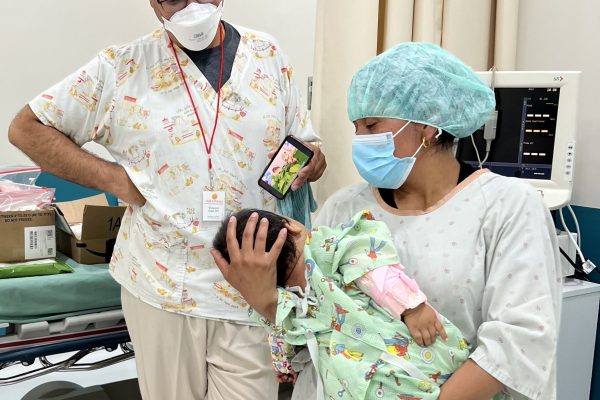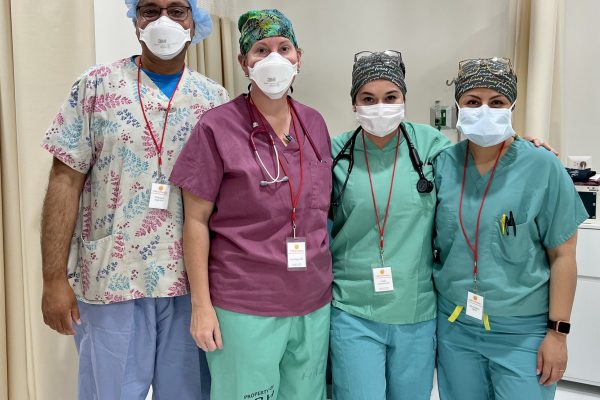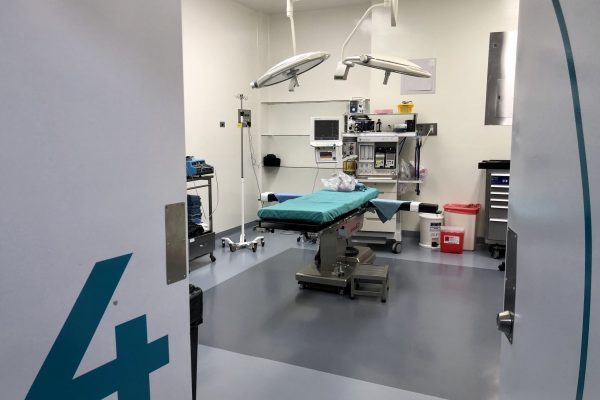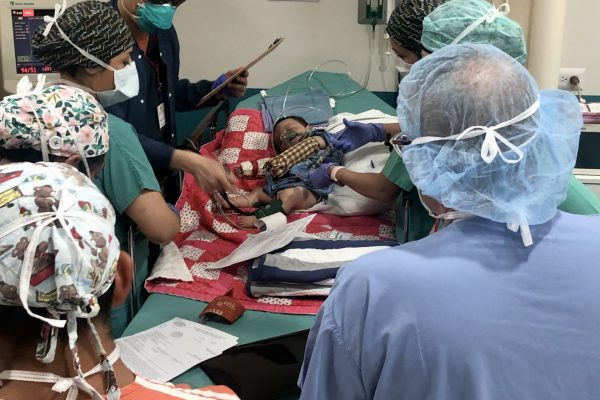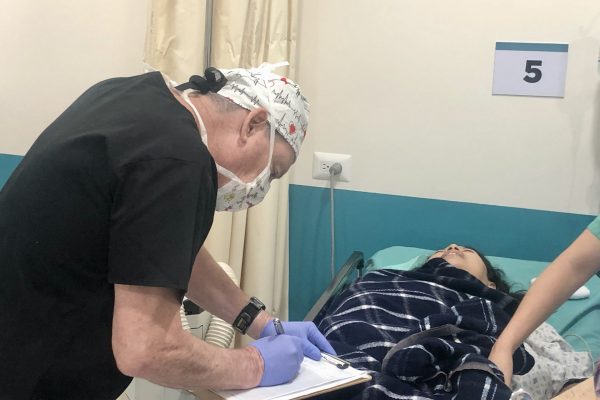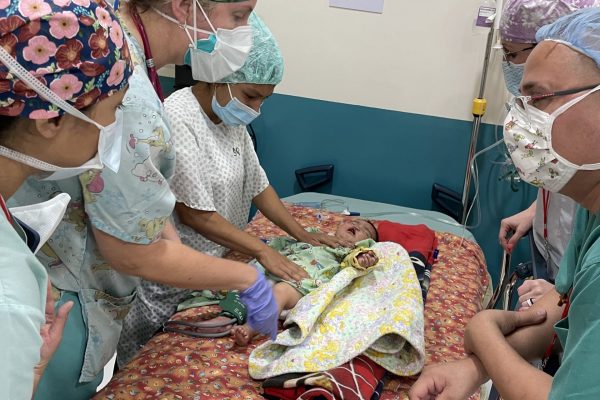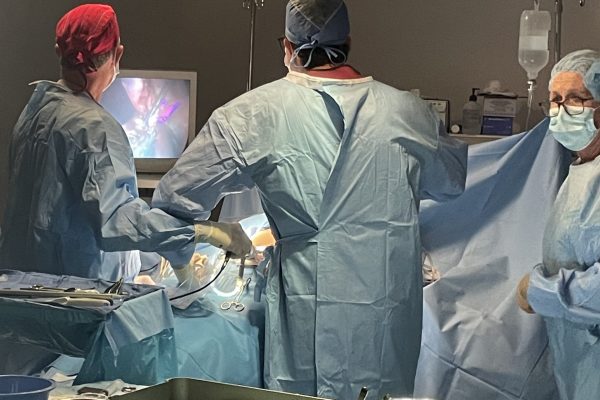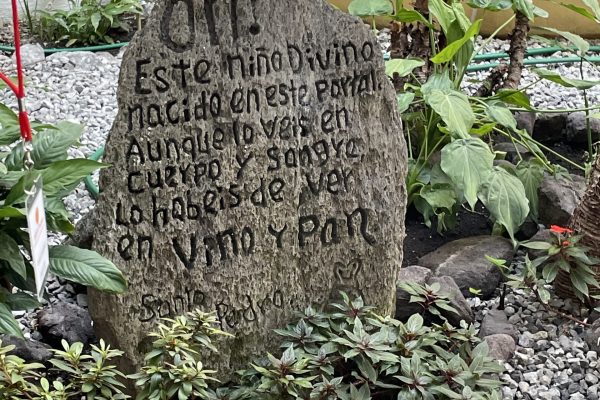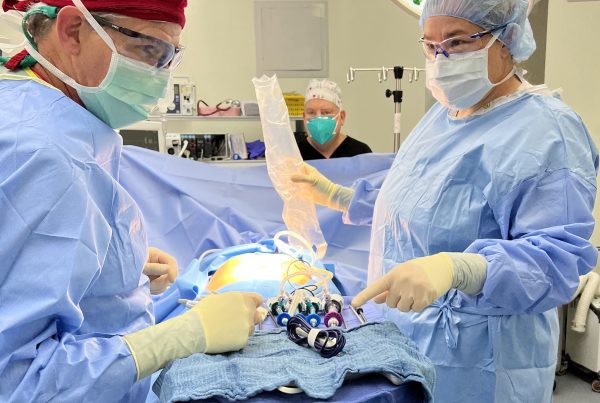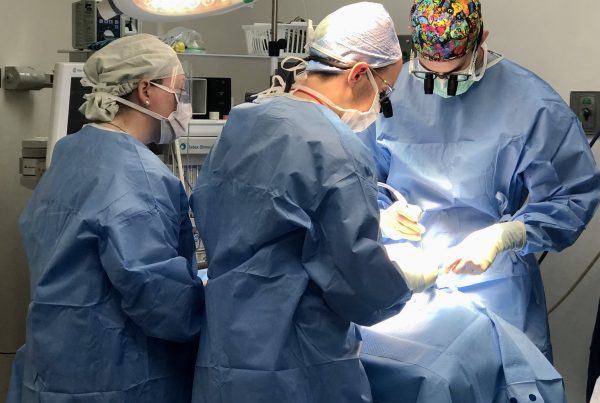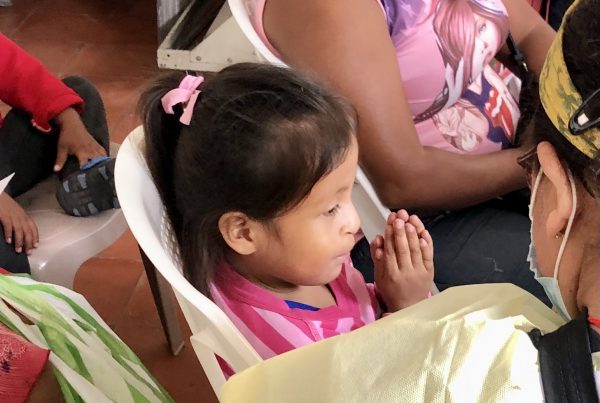Our devotional this morning spoke of Moses, the burning bush, and sacred space or holy ground. In the operating rooms, there is a square that holds the operating table and in which only those who are sterile may stand. If you are not one of those people, you also must not touch anything blue. As we go through the days of surgery this week, this space, these people we meet, become a sacred ground where gifts of time and talent are shared with those less fortunate.
On the way back to the operating rooms this morning, a small courtyard area caught my eye. What caught my eye was a large “Oh!” chiseled into a boulder, followed by smaller Spanish words, of which I could pick out a few. It is not easy to google info in English, so I hope I provide a basic and accurate story of how Las Obras has come to be.
The full quote beautifully chiseled in stone is: “Oh! Este niño divino nacido en este portal. Aunque lo veis en cuerpo y sangre, lo hobeis de ver en vino y pan.” Irene, a nurse born and raised in Guatemala but now living in San Antonio and who has made this trip ten or twelve times, translated it for me: “Oh! This divine child was born on this portal. Although you see it in body and blood, you have to see it in wine and bread.”
It is a quote from Santo Pedro Hermano, (1626 -1667), a Spanish saint and missionary who lived and worked here in Guatemala from 1643 until the end of his life. He is known as the “Saint Francis of Assisi of the Americas” for his work with the poor and marginalized. What it seems to be saying to me, and to others I’ve chatted with, is that we cannot just focus on the tangible images of God – the statues, the rituals, the church buildings – but that we must see God in the ordinary and common elements of daily life – in the bread and wine we eat and drink. Still, many hands have prepared that we do not know, in our daily interactions with strangers and loved ones, in the beauty of creation all around us. Every moment, every encounter is an opportunity to see love, connect with love, and honor all of God’s creation and we must open our eyes and extend our hands.
In 1658, Pedro Hermano was given a thatched hut which he converted into a hospital for the poor. (This hut was in a different location than Los Obros.) His humble heart and love for the less fortunate led him to pick up the sick and disabled on the streets and carry them in his arms or on his back to his hospital. He roamed the streets of Antigua, pushing a wheelbarrow and ringing a bell to collect money and clothing for the poor in his care and is beloved by all Guatemalans. His tomb is now a shrine housed three blocks from Los Obros in San Francisco Church.
The Obras Sociales del Santo Hermano Pedro hospital has a long history of hundreds of years, but Fray Guillermo Bonilla founded its current version in 1979. (He was the man we were greeted by on our first morning at the hospital, and according to Jamie, a Faith in Practice employee here, that encounter was quite the privilege. There is a photo of him on the Day Two blog.) Fray Guillermo was inspired to follow Santo Pedro Hermano’s example and mission to care for the poor, sick, and outcasts of society while attending seminary.
He began by renting several houses in Antigua where the Franciscans took care of the needy and disabled through local donations. At this time, what we call Los Obros today was the Public National Hospital of Antigua until earthquakes in the the 1970’s destroyed it and caused it to be abandoned. Working with local authorities, the municipality awarded Guillermo and the Franciscans the church and hospital. Guillermo began rebuilding the ruins of the hospital and it quickly became one of the most important hospitals in the area.
To this day, Los Obros continues the Franciscan tradition of taking in those who need help and care and is funded purely through donations. Among a long list of services that the hospital provides is the surgical unit staffed by full-time Los Obros nursing staff and volunteer groups, of which Faith in Practice is only one and the most active.
In other news, Sammir went home today happy and content, strapped back onto his mother. She was laughing and smiling. Two lives have been changed in the most positive of ways! Also four more cleft lips and two palates were repaired for children. And for the adults, four hernias were repaired, two gallbladders removed, and four hysterectomies performed. I would say that the eyes and hands of the team are focused on seeing God and being love in what is an ordinary day of medical care for them.


